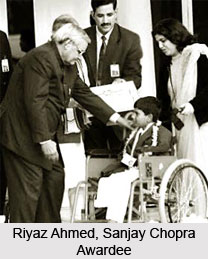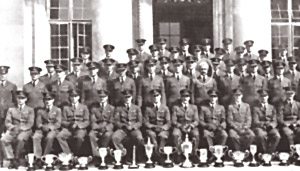 Arjan Singh, the man who was awarded as the only man standing out in Indian Air Force with the baton of Marshal, from Air Chief Marshal, is not just a man who can combat but Singh is much more than that. Singh`s war tactics during World War II with British Indian Air Force, his grit to make it inside the `big league` during British Raj over India, courage over cowardice and patience during times of strife, made him a distinct man in every domain of his character. Arjan Singh`s upbringing can obviously be taken into account for his tremendous will-power to join air force and fly high to the skies. With his brilliant intellect, he was selected to join a respected air force school in England, the Cranwell. Then came the time to just sit back and witness the awing battle strategies of Arjan Singh with Royal Air Force in unsteady areas like Burma or the incursion of Japan. Singh`s eventful and successful career with British Indian Air Force had paved the way for earning him the DFC (Distinguished Flying Cross). The later, independent India and Indian Air Force were nearly prepared to receive Arjan Singh as their master in disguise. With considerable feats already into his pocket, Arjan Singh was later posted to peaceful positions, away from the hullabaloo.
Arjan Singh, the man who was awarded as the only man standing out in Indian Air Force with the baton of Marshal, from Air Chief Marshal, is not just a man who can combat but Singh is much more than that. Singh`s war tactics during World War II with British Indian Air Force, his grit to make it inside the `big league` during British Raj over India, courage over cowardice and patience during times of strife, made him a distinct man in every domain of his character. Arjan Singh`s upbringing can obviously be taken into account for his tremendous will-power to join air force and fly high to the skies. With his brilliant intellect, he was selected to join a respected air force school in England, the Cranwell. Then came the time to just sit back and witness the awing battle strategies of Arjan Singh with Royal Air Force in unsteady areas like Burma or the incursion of Japan. Singh`s eventful and successful career with British Indian Air Force had paved the way for earning him the DFC (Distinguished Flying Cross). The later, independent India and Indian Air Force were nearly prepared to receive Arjan Singh as their master in disguise. With considerable feats already into his pocket, Arjan Singh was later posted to peaceful positions, away from the hullabaloo.
Singh was thereby shifted as Squadron Leader, Operations, with a comfortable office in the South Block overlooking Rajpath (in New Delhi). This was the specified seat of power, the heart of Lutyen`s Delhi. However, Arjan Singh was not led to stay in this position for long, as he replaced Wing Commander K. K. (jumbo) Majumdar, who was killed in a crash February 17, 1945, while flying a Hawker Hurricane on acrobatic demonstration sortie for the Indian Air Force Display (AFDF).
 AFDF had been constituted for touring the country to conduct acrobatic shows and displays to attract and bring to the public notice Indian Air Force`s exploits. After K.K. Majumdar`s death, Arjan Singh was posted to AFDF as Wing Commander, but only for a few months. He was subsequently selected for training at the RAF Staff College in England, the first person to be so chosen.
AFDF had been constituted for touring the country to conduct acrobatic shows and displays to attract and bring to the public notice Indian Air Force`s exploits. After K.K. Majumdar`s death, Arjan Singh was posted to AFDF as Wing Commander, but only for a few months. He was subsequently selected for training at the RAF Staff College in England, the first person to be so chosen.
This course lasted a year or so. After his return, Arjan Singh was promoted to Group Captain on August 15, 1947 and given the command of the Ambala Air Force station.
India became independent and Group Captain Arjan Singh with the newly-created Indian Air Force, led, in a tempest, a formation flight over the Red Fort on August 16, 1947. Prime Minister Jawaharlal Nehru had, on that day, unfurled the National Flag over the ramparts of the seat of Mughal power, the Red Fort. Arjan Singh had also led the fly-past on Republic Day over Rajpath, five times-as Air Commodore and Air Vice-Marshal. It used to be a grand affair, especially in the early days and one of the Marshal`s fond memories is of the time they put up 110 aircraft for the fly-past at various heights, flying at speeds varying from 100 to 400 miles per hour.
Singh`s family was already living in India, before partition, but his father`s ancestral land and his own land had been in the area that had become Pakistan. Kishan Singh (Arjan Singh`s father) had left his job in Ceylon Railways because there was discrimination against Indians. Air Commodore Mehar Singh as well as Group Captain Arjan Singh had been allocated land in the Terai region of Uttar Pradesh, which his father started looking after. This was however, not the only land Arjan Singh`s family possessed.
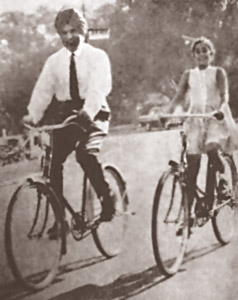 In the mean-time, significant happenings included Arjan Singh marrying his long courted beloved Teji in a nice ceremonial affair. Singh was still commanding the Ambala Air Force Station and took up residence in Ambala itself.
In the mean-time, significant happenings included Arjan Singh marrying his long courted beloved Teji in a nice ceremonial affair. Singh was still commanding the Ambala Air Force Station and took up residence in Ambala itself.
Promoted to Air Commodore in 1949 under the ranking of Indian Air Force, Arjan Singh took over as the Air Officer Commanding, Operational Command. It is well known at Western Air Command that Arjan Singh had the distinction of having the longest tenure as the AOC of the Operational Command, from 1949 to 1952 and again from 1957 to 1960.
It was in 1949 that the couple`s first daughter, Amrita was born. Three years later her brother Arvind Singh was born and the youngest, Asha, followed another three years later.
The children were pretty young when, in I960, Air Vice-Marshal Arjan Singh went to England for the one-year course at Imperial Defence College (now called Royal College of Defence Studies), in London. During the break at IDC in August/September, he went to the USA and Canada, where he received fair exposure to the operational procedures of their air forces and also met a number of officers, some of whom became good friends. Singh recollected that he was surrounded by highly decorated officers and "felt like a mini" out there. After this course, which prepares officers for higher postings, he held various senior appointments at Air Headquarters. He was Air Officer, Administration (1961), Deputy Chief of the Air Staff (1963) and subsequently Vice-Chief of the Air Staff.
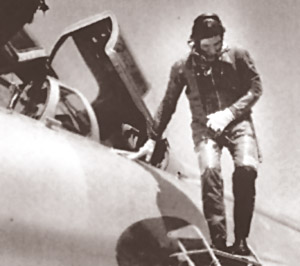 Arjan Singh was in the Air Headquarters when the notorious Chinese invasion in 1962 took place. It was decided that the Indian Air Force would not play a fighting role in this war, because once the air forces were involved, it ceased to be a limited engagement. As it turned out, the Air Force did play a `non-fighting` role in logistic support and in evacuating wounded soldiers. Even though he was not in command, Arjan Singh stated the Air Force was prepared to fight and Chinese advance would have been much restricted had the Air Force also participated in that operation.
Arjan Singh was in the Air Headquarters when the notorious Chinese invasion in 1962 took place. It was decided that the Indian Air Force would not play a fighting role in this war, because once the air forces were involved, it ceased to be a limited engagement. As it turned out, the Air Force did play a `non-fighting` role in logistic support and in evacuating wounded soldiers. Even though he was not in command, Arjan Singh stated the Air Force was prepared to fight and Chinese advance would have been much restricted had the Air Force also participated in that operation.
Arjan Singh took over as Chief of the Air Staff (CAS) on July 15, 1964, under Indian Air Force and within a year came the most testing time of his life.
Pakistani forces infiltrated into Kashmir in August, 1965 and later attacked the Chhamb-Jaurian sector, with regular army formations on September 1, 1965. It was a fierce attack in which a Pakistani force of two infantry brigades and two armoured regiments were involved. The 3rd Mahar battalion bore the impact of the attack. They were supported by a squadron of tanks of the 20th Lancers, but there was no artillery support, as the enemy shelling had damaged and dislocated some of Indian artillery.
The Army in Kashmir had sent a request for air support at 11 a.m. General J. N. Chaudhury, Army Chief during that time, enquired about the Air Chief if the Indian Air Force could come to help. Both the service chiefs went to the then Defence Minister, Y. B. Chavan, who gave the permission within a few minutes. The prepared air attack was launched from Pathankot, near the border of Jammu and Kashmir that day. Vampires of World War II vintage were also used for the sorties in addition to Mysteres and Gnats.
Amidst the tremendous assault by Vampires and Gnats, Indian Air Force was trying to wrap up the air-war, with some casualties.
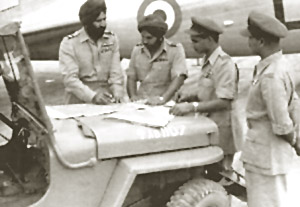 Arjan Singh recalled in this context, with his times in war under Indian Air Force: "We were able to attack Pakistani troops but, unfortunately, hit some of our own troops as well. We lost four Vampire aircraft, but the whole operation was a major success. Though planning and execution could have been better, the objective of stopping Pakistan`s advance was achieved."
Arjan Singh recalled in this context, with his times in war under Indian Air Force: "We were able to attack Pakistani troops but, unfortunately, hit some of our own troops as well. We lost four Vampire aircraft, but the whole operation was a major success. Though planning and execution could have been better, the objective of stopping Pakistan`s advance was achieved."
This was the beginning. The war intensified and the Indian Army and Indian Air Force performed well, as was judged from some of the headlines in various newspapers during the period:
The Indian Express on September 2, 1965 reported: "IAF Planes go into Action, 10 Pakistani Patton Tanks Destroyed. Enemy Offensive Repulsed".
During the war, the Indian Air Force penetrated deep into Pakistani territory and attacked military targets around Peshawar, Quetta, Rawalpindi, Sargodha and other Pakistani cities. As many as 72 trains and many vehicles were attacked, disrupting the Pakistani army`s supply lines. They had religiously followed Prime Minister Lal Bahadur Shastri`s instructions to attack military targets only.
It was a short war. Primarily under international pressure, a UN negotiated cease-fire was announced on September 23, 1965. The Army had conquered considerable Pakistani territory. Yet the fighting men were itching for more. However, a deadlock in land fighting had been reached.
Both the Army Chief and the Air Chief were awarded the Padma Vibhushan. Thus, the CAS Arjan Singh serving audaciously under Indian Air Force, received the award at the age of 46. His rank was raised to that of Air Chief Marshal by a grateful nation.
Singh had put in two years of service as Air Marshal and the tenure for the new rank was three years. Thus, Arjan Singh stayed the longest in the top saddle of the Indian Air Force.
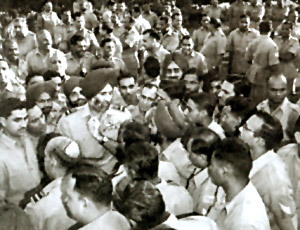 After the war, it was time for stock taking. The biggest losses of the Indian Air Force were in Pathankot, and this was a failure of command on the part of the officers there. After the war thus, Singh advocated a policy of greater self reliance. This resulted in a number of new projects for manufacturing aircraft, armament and electronic equipment under license from foreign companies.
After the war, it was time for stock taking. The biggest losses of the Indian Air Force were in Pathankot, and this was a failure of command on the part of the officers there. After the war thus, Singh advocated a policy of greater self reliance. This resulted in a number of new projects for manufacturing aircraft, armament and electronic equipment under license from foreign companies.
Asked to reflect on his tenure as the chief of the IAF (Indian Air Force), Arjan Singh spoke that he always emphasised on training. He was also proud of setting up the Air Force Academy at Hyderabad to train promising pilots and was severely aware of the problems that had cropped up because of lack of an advanced trainer aircraft. Singh also worked at improving the service conditions of the Air Force personnel, especially the flying allowance of flying recruits. Improving the service conditions resulted in the morale of the force shooting up and also helped draw more able people to join the IAF.
Even as Air Vice Marshal under Indian Air Force, the humble Arjan Singh used to often cycle to his office, but he stopped because he felt that cycling was not enough exercise. Hence he started walking, though that too did not work out, since every time he went walking, someone would stop to offer him a lift.





